
EN 355 relates to lanyards intended for use in connecting the attachment point of a full body harness to a suitable anchorage device. The lanyard includes a shock absorbing element, intended to reduce the force applied to the user by gradually arresting the fall.
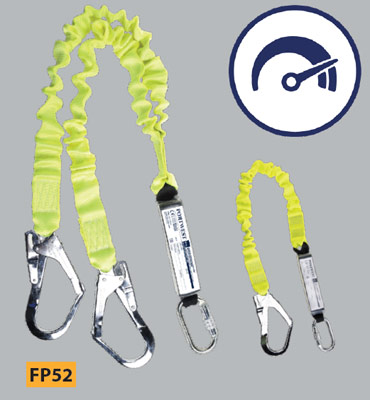
Shock absorbing lanyards are subject to a drop test, intended to assess the performance of the lanyard in terms of its ability to arrest a fall within a maximum distance, whilst maintaining the force to a suitable maximum. In particular, the lanyard should not deploy (stretch, open, tear) beyond a maximum length of 1.75 metres, with a maximum force of 6 kN, following a fall using a minimum solid mass of 100 kg, dropped over a distance of twice the length of the lanyard.
Where energy absorbers are intended to be sold separately to the lanyard (i.e. as a component), they are extended with chain to a length of 2 metres, with the mass dropped over a distance of 4 metres.
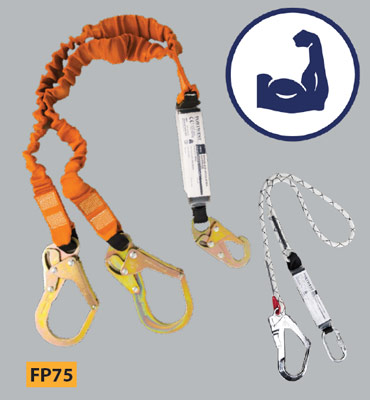
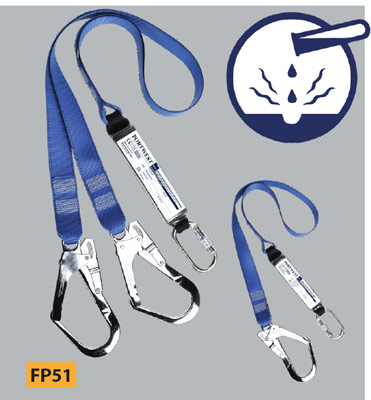
Whole products are subjected to tensile tests. Energy absorbers are subject to a 15 kN tensile force. Tensile forces are applied and held for at least 3 minutes, to ensure the breaking strength of the product is in excess of the force specified by the standard.
Metallic components used in fall protection equipment are subjected to a neutral salt-spray test intended to prove a minimum resistance to environmental corrosion (specifically rust). Products are held within a sealed chamber, which is lled with a salt-water mist, which can induce rust in unprotected metals. Products are subjected to either 24 or 48 hours exposure and examined for rusting and function afterward.

Systems made up of a line intended to be fixed (either temporarily or permanently) to a structure at the top only, on which a travelling device is attached. The user connects to this travelling device when climbing or descending – in the case of a fall, the travelling device should grip the line and arrest the fall.
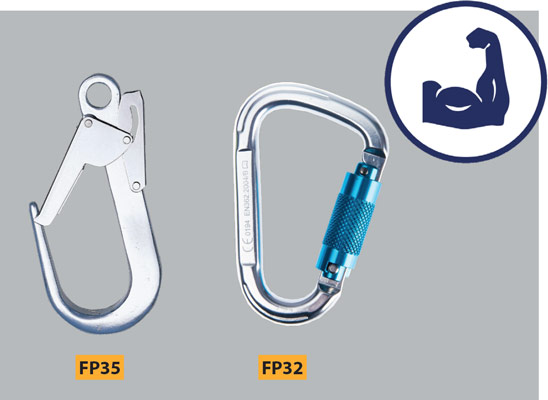
Connectors are subject to a range of tensile strength tests, applied in several directions, depending on the type of connector. Where a connector has only one possible direction of loading (e.g. where one end of the connector is permanently attached to another component), loading is applied in only one direction. However, where foreseeable misuse could result in loading being applied in directions other than the ‘main’ direction, testing is required in both the major (length) axis and minor (width) axis. In addition, where connectors do not automatically lock on closure, testing is carried out with gate both locked and unlocked.
In the case of EN 362, tensile loads are applied and held for 3 minutes, whereas in EN 12275, the load is increased to the point where breakage occurs. Therefore, it is important when comparing products, to be aware of which standard the connector has been tested to.
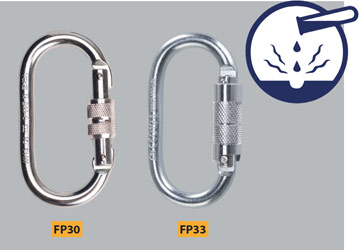
Metallic components used in fall protection equipment are subjected to a neutral salt-spray test intended to prove a minimum resistance to environmental corrosion (specically rust). Products are held within a sealed chamber, which is filled with a salt-water mist, which can induce rust in unprotected metals. Products are subjected to either 24 or 48 hours exposure and examined for rusting and function afterward.
Unveiling the Portwest Double 140kg Lanyard with Shock Absorber - Black/Orange: A paragon of innovative design and heightened safety measures. Engineered for professionals who demand nothing short of excellence, this double-ended lanyard combines uncompromising resilience with user-centric features, marking it as the go-to choice for multifaceted operational needs.
Key Features:
Standards and Accreditations:
The Portwest Double 140kg Lanyard with Shock Absorber - Black/Orange encapsulates Portwest's dedication to launching cutting-edge safety tools. Opt for Portwest, and invest in a legacy of unmatched quality and safety.
Specifications are subject to change - See Terms & Conditions for more info
Portwest has been independently rated by Ecovadis for its environmental, social, and ethical performance and achieved a silver rating, meaning they are in the top 25% of globally rated companies.
The pillars taken into consideration include the environment, labour practices and human rights, ethics, and sustainable procurement.